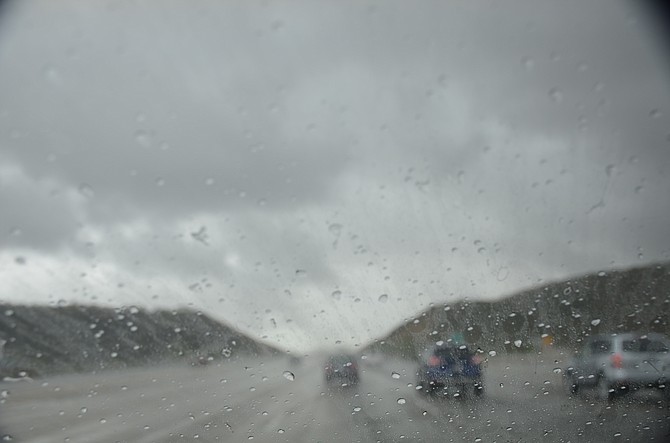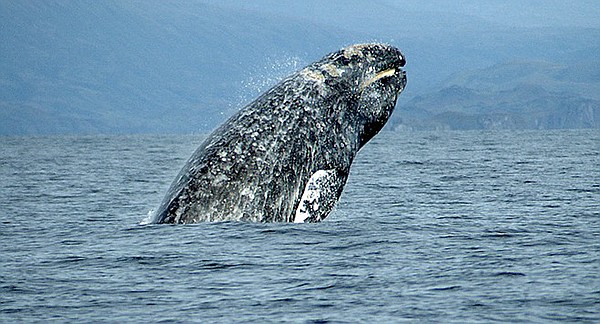 Facebook
Facebook
 X
X
 Instagram
Instagram
 TikTok
TikTok
 Youtube
Youtube

Highest Monthly Rainfall totals in San Diego are most likely to occur in January and February (nearly two inches each on average) according to weather-service statistics. If low temperatures accompany the typical Pacific storms of this period, there’s a chance of snow in the mountains, including a very slim chance of snowfall as far west as the coast. Only during the months of December and January have traces of snow ever been recorded at San Diego’s National Weather Service station.

Gray Whale Migration off San Diego County’s coast peaks this month. The best view spots from land are high points close to the surf. Aside from the whale watching overlook at Cabrillo National Monument, try Sunset Cliffs, the pocket parks and dead-end streets from Pacific Beach to Scripps Park in La Jolla, various ocean overlooks on the trail system at Torrey Pines State Reserve, the cliffs opposite Carmel Valley Road south of Del Mar, overlooks opposite Lomas Santa Fe Drive in Solana Beach, and various clifftop view points and beach access stairways in Encinitas and Leucadia. Scan the ocean a few hundred yards to a couple of miles out using highpower binoculars. Best times for viewing are about 9 a.m. to noon.
After noise and whoopla on TV at the turning of midnight, step outside into the silent, cold dark. The bright Moon will now be shining high in the southeast. Sparkling less high in the south will be Sirius, with the other bright stars of Canis Major to its right and below it. Sirius is the bottom star of the bright, equilateral Winter Triangle. The others are Betelgeuse in Orion's shoulder to Sirius's upper right, and Procyon the same distance to Sirius's upper left. The Triangle now stands upright, just about in balance, as the Moon looks on.
The above comes from the Outdoors listings in the Reader compiled by Jerry Schad, author of Afoot & Afield in San Diego County. Schad died in 2011. Planet information from SkyandTelescope.org.


Highest Monthly Rainfall totals in San Diego are most likely to occur in January and February (nearly two inches each on average) according to weather-service statistics. If low temperatures accompany the typical Pacific storms of this period, there’s a chance of snow in the mountains, including a very slim chance of snowfall as far west as the coast. Only during the months of December and January have traces of snow ever been recorded at San Diego’s National Weather Service station.

Gray Whale Migration off San Diego County’s coast peaks this month. The best view spots from land are high points close to the surf. Aside from the whale watching overlook at Cabrillo National Monument, try Sunset Cliffs, the pocket parks and dead-end streets from Pacific Beach to Scripps Park in La Jolla, various ocean overlooks on the trail system at Torrey Pines State Reserve, the cliffs opposite Carmel Valley Road south of Del Mar, overlooks opposite Lomas Santa Fe Drive in Solana Beach, and various clifftop view points and beach access stairways in Encinitas and Leucadia. Scan the ocean a few hundred yards to a couple of miles out using highpower binoculars. Best times for viewing are about 9 a.m. to noon.
After noise and whoopla on TV at the turning of midnight, step outside into the silent, cold dark. The bright Moon will now be shining high in the southeast. Sparkling less high in the south will be Sirius, with the other bright stars of Canis Major to its right and below it. Sirius is the bottom star of the bright, equilateral Winter Triangle. The others are Betelgeuse in Orion's shoulder to Sirius's upper right, and Procyon the same distance to Sirius's upper left. The Triangle now stands upright, just about in balance, as the Moon looks on.
The above comes from the Outdoors listings in the Reader compiled by Jerry Schad, author of Afoot & Afield in San Diego County. Schad died in 2011. Planet information from SkyandTelescope.org.
Comments